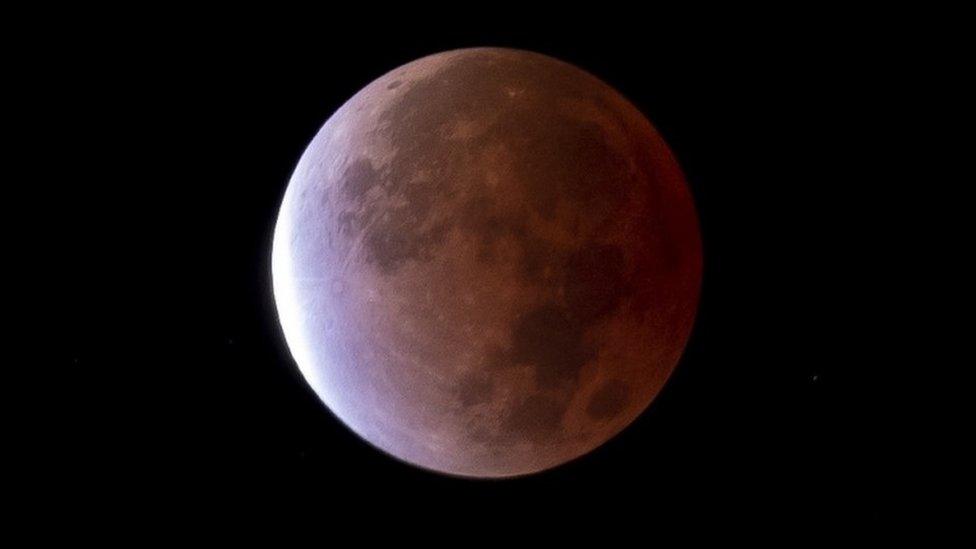Lunar eclipse: November's full moon reaches its peak with partial eclipse
- Published

The Moon does not give out any light of its own - it shines because its surface reflects the light from the Sun. During a lunar eclipse, the Earth moves between the Sun and the Moon, cutting off the Moon's light supply. When this happens, the surface of the Moon takes on a reddish glow instead of going completely dark.
This picture was taken over Gifu Castle in central Japan. The partial lunar eclipse saw the moon almost completely cast in shadow as it moved behind the Earth, turning 97% of its face red.
The full Beaver Moon can be seen rising above New York's famous skyline. The partial lunar eclipse was visible in North and South America, with later parts also visible in Australia and northeast Asia too.
Beavers often start building their dams about this time of year - which is where November's full moon gets its name. Here's the Beaver Moon over Brisbane's Story Bridge.
Santiago, the capital of Chile in South America, also witnessed the longest partial lunar eclipse. From the moment the eclipse began - when the Moon entered the Earth's shadow - to when it ended took more than 3 hours and 28 minutes.
Here it is next to 'The Statue of Freedom', the bronze statue which sits on top of the US Capitol Building in Washington DC. The next time a partial lunar eclipse will last this long will be in 2669.
- Published3 November 2021
- Published20 June
- Published7 April 2021
